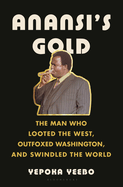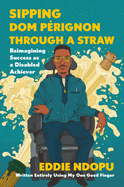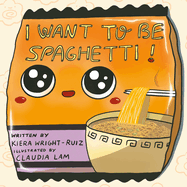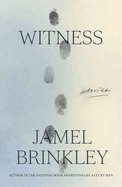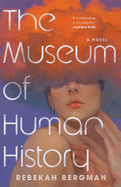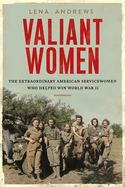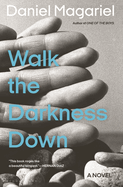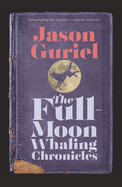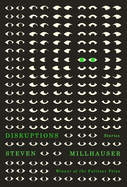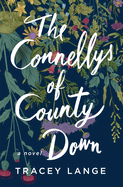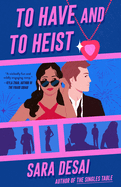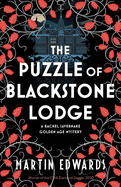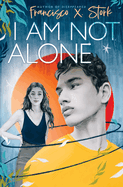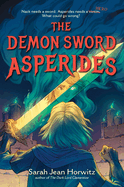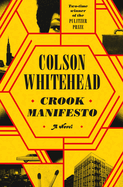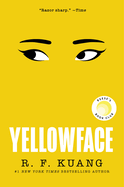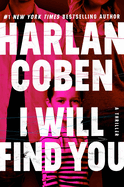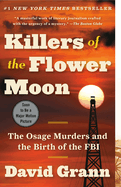Friday, August 4, 2023
We review some standout nonfiction this week: Anansi's Gold by journalist Yepoka Yeebo is a "thrilling true-crime debut that reverberates on the world stage"; acclaimed disability rights activist Eddie Ndopu writes (with his one working finger) an "unmissable memoir," Sipping Dom Pérignon Through a Straw; Lena S. Andrews presents a "thoroughly researched celebration of previously unsung female heroes of World War II" in Valiant Women; and food writer Kiera Wright-Ruiz debuts with the "delightfully delectable" I Want to Be Spaghetti, illustrated by Claudia Lam, featuring a starry-eyed, kawaii ramen who longs to be spaghetti. And so many others!
In The Writer's Life, Victoria Christopher Murray, co-author with Marie Benedict of the novel The First Ladies, tells us about her early love for historical figures.
Witness
by Jamel Brinkley
The vagaries of life, from the changing racial composition of neighborhoods to the inevitability of aging, constitute the leitmotif of the 10 stories in Witness, Jamel Brinkley's affectingly melancholy follow-up to his National Book Award finalist, A Lucky Man. The setting, as in his first book, is in and around Brooklyn, with Black communities struggling to adjust to altered circumstances. One story's circumstances are otherworldly: in "Arrows," the Black protagonist has conversations with his dead mother's ghost, who's angry that he's about to sell the family home. But most stories are earthly, such as "Blessed Deliverance," in which five friends wonder what the building that houses an animal rescue used to be, and how a classmate known to dig through trash for uneaten pizza came to be one of its volunteers.
Brinkley's stories shine when they focus on the interstices of behavior that reveal character. Standouts include "Bartow Station," a story of a UPS driver for whom a visit to the world's oldest subway tunnel summons memories of childhood tragedy, and the title piece, which highlights the casual racism Black people confront in its tale of a Black woman whose health concerns white doctors repeatedly brush aside. The stories are downbeat, but the prose is elegant, as when the protagonist of "Arrows" sees an old family photograph covered with his now-blind father's fingerprints: "it was filigreed, an intricate web spread across our faces." Brinkley has produced a second collection that justifies his status as one of the most exciting writers in the U.S. --Michael Magras, freelance book reviewer
Discover: In Witness, Jamel Brinkley follows up his assured debut with 10 powerful, elegant stories about the perils of change and the perpetual difficulties faced by Black communities in and around Brooklyn.
The Museum of Human History
by Rebekah Bergman
Debut novelist Rebekah Bergman's The Museum of Human History is a breathtaking and poignant story about pain, obsession, and the passage of time. When eight-year-old Maeve falls into a mysterious comatose state in which she never appears to age, the people around her seek answers. Her father, an entomologist named Lionel, allows a cult-like following to grow in her wake, all the while wondering what his deceased wife would have done. Kevin, a museum owner with a staggering family legacy, wants Maeve as his latest exhibit. And Luke, the youngest man to receive a devastating new treatment to prevent aging, hopes to retrieve his dearest memories. But Maeve's twin sister is determined that her sister finally find peace.
Bergman's lyrical prose and keen character insight infuse the novel with near-constant moments of emotional enlightenment. The short, fragmented narrative structure masterfully intertwines not only the lives of its haunting characters but also a collection of themes that, despite their abstract weight, all feel emotionally grounded in Bergman's hypnotic reality. The intimate snapshots Bergman captures--an ill-fated trip to a Halloween store for a cow costume, a heartrending road trip after a fatal diagnosis, a chance encounter between two grieving women in a graveyard--are wistfully beautiful and painfully tender. As atmospheric and inventive as the speculative elements of The Museum of Human History are, it is Bergman's endlessly gentle handling of raw emotion that will linger with readers like a bruise. --Alice Martin, freelance writer and editor
Discover: This evocative and stunning literary debut perfectly pairs emotional acuity with a complex and high-concept narrative.
The Hundred Loves of Juliet
by Evelyn Skye
In The Hundred Loves of Juliet, her first book for adults, Evelyn Skye (Three Kisses, One Midnight, with Roshani Chokshi and Sandhya Menon) spins a mesmerizing tale of heartbreak and hope, one that spans centuries, to give Romeo and Juliet the happy ending they deserve. It's January, and Helene Janssen has abandoned her dead-end job and cheating husband in Los Angeles for a remote Alaskan fishing town. She's been writing snippets of stories all her life, centered on the imaginary friend she created in middle school, which she now wants to turn into a novel. But then the man who stars in her short stories walks into the bar where Helene finds herself on her first night in Alaska. When she approaches Sebastien, though, he responds with brusque rudeness and flees the bar. Sebastien, for his part, is shaken. He is in fact the immortal Romeo, who didn't die the way Shakespeare would have everyone believe, but lives on, cursed to fall in love with Juliet's reincarnations only to lose her to an early death over and over. He had found Helene, the newest Juliet reincarnation, 10 years ago and had chosen to leave her to her own life for a chance of happiness. But fate clearly has other plans. Together, Helene and Sebastien might have a chance at breaking the curse once and for all.
Tender and passionate, The Hundred Loves of Juliet celebrates the intensity of living in the moment and of believing in the immense power of love. Readers will fall in love with Sebastien and Helene as they fall in love with each other. --Dainy Bernstein, postdoc in children's literature, University of Illinois Urbana-Champaign
Discover: In this reimagining of Romeo and Juliet, the two lovers challenge their star-crossed status by living and loving in the moment rather than dreading an inevitable end.
Walk the Darkness Down
by Daniel Magariel
In Walk the Darkness Down, Daniel Magariel (One of the Boys) introduces a couple separately torturing themselves through grief and eventually coming together again.
Marlene and Les, who live in a small, troubled town on the Atlantic coast of the United States, lost their young daughter years ago. In their suffering, they mistreat each other. Les is a commercial fisherman on an offshore scalloping boat; punishingly hard physical labor, camaraderie with the men of his crew, and violence combine in a cocktail that helps distract him from his loss. Marlene drives the streets at night, mining memory, searching for the deep and searing pain that will help her remember. During his brief stays at their apartment, they repeat a pattern: Marlene breaks the bedroom door and Les fixes it. When Les is offshore, she picks up local sex workers and brings them home to clean them up and feed them. One of these encounters develops into something resembling friendship, just as Les's crew fractures and the dangers of his work increase. As their two lives approach new crises, Marlene and Les must chart a course out of self-destruction.
Magariel's prose is as quietly lovely and evocative as his subjects are bleak: "The woman settles into her chair, and Marlene proceeds to lay bare the details of her face. The worry lines of her forehead Marlene excavates with a pass over the brow." Stark and tragic, Walk the Darkness Down offers a harrowing view of individual and familial suffering--with empathy and, ultimately, with hope. --Julia Kastner, librarian and blogger at pagesofjulia
Discover: Grim but with a final upward turn, this novel of loss, grief, and strained bonds investigates human connections and disconnections.
The Full-Moon Whaling Chronicles
by Jason Guriel
Jason Guriel (On Browsing) may, in fact, be a witch. Before calling for his death by burning, however, please consider the stunningly creative work that has issued from his cauldron: The Full-Moon Whaling Chronicles. Stuffed with every imaginable ingredient (sci-fi futuristic dystopia, high fantasy, and '90s pop culture, to name just a few), the novel opens with an epigraph from Melville's Moby-Dick and proceeds in unexpectedly delightful ways. Oh, and one more thing: it's written entirely in flawless rhymed couplets. There is no reason to believe this absurd concoction will work, but it does, rewarding readers with an inventive narrative, gorgeous wordplay, and a healthy dose of humor throughout.
Guriel's book (a companion to Forgotten Work) traces multiple story lines, alternating between the year 2070, where undergrad Kaye studies a cult classic YA novel, and the text of that novel itself. Various fan fiction versions of the novel occasionally intrude, and by the "Epilogue."--and subsequent "Epilocket."--the edges start to blur, blending the narratives into a fascinating conclusion. Guriel's poetic skill is impressive, couplets rolling forth effortlessly, each packed with cleverness: "Some believed the reemergence of/ The stars was proof of concept for God's love;/ At last, the Second Coming had begun./ Still others, skeptics, argued that the sun/ Was just a massive, flaming ball of gas./ New Marxists viewed the Miracle through class." Readers who submit to the hypnotic rhythm of these lines may suspect witchcraft, but they will love the spell Guriel has cast on them. --Sara Beth West, freelance reviewer and librarian
Discover: Not for the faint of heart, Jason Guriel's Full-Moon Whaling Chronicles is an impressive and fully absorbing work with an inventive narrative, gorgeous wordplay, and a healthy dose of humor.
Disruptions
by Steven Millhauser
Strange occurrences bedevil small-town America in Disruptions, a satisfyingly bizarre story collection from Pulitzer Prize-winner Steven Millhauser (Voices in the Night). Some of these 18 pieces stick to the everyday, such as "One Summer Night," in which a 16-year-old visits his girlfriend's house, only to have her mother, a "suburban housewife... drinking alone in her Connecticut living room," pat the sofa and say, "Tell me your deepest secrets." But then there's "After the Beheading," in which residents debate what to do about a "wave of break-ins and robberies" and settle upon a throwback: public executions, with the guilty party's head lopped off by guillotine in the middle of the town green.
That's the tenor of most of these pieces. In the wonderfully creepy "Guided Tour," a company that offers "an authentic experience of historical events" takes tourists on a journey that replicates all too closely the one by the revenge-hungry Pied Piper of Hamelin. In "The Little People," a subgroup of a town's population has a unique characteristic: they're two inches tall. And the magnificent "Kafka in High School, 1959" puts teenage Kafka in midcentury America, where he drinks cherry Cokes and struggles through adolescence. A couple of stories feel gimmicky, but most of Disruptions is an innovative thrill highlighted by inspired humor, as when, in "After the Beheading," folding chairs from a church are brought to the town green to help the overflow crowd "see the victim's head clearly." These are macabre tales from one of America's best authors. --Michael Magras, freelance book reviewer
Discover: In Disruptions, Steven Millhauser tells 18 macabre tales that inflict mystery, transformation, and strange doings upon small-town America.
The Connellys of County Down
by Tracey Lange
The young Connellys of Port Chester, N.Y., imagined they were "The Connellys of County Down," as their mother spun Irish-inspired tales by the same name, ascribing superpowers to each of her children. But in The Connellys of County Down, the engaging second novel from Tracey Lange (We Are the Brennans), the adult siblings' lives are anything but storybook.
Tension is high as Tara Connelly, 30, leaves the Taconic Correctional Facility after serving 18 months for transporting drugs. She expects her older sister, Geraldine, to pick her up, given that Eddie, the middle Connelly, has avoided Taconic and Tara during her incarceration. Geraldine doesn't show up, forcing Tara to accept a ride from an unlikely rescue--and forecasting inevitable sibling conflict. Back home, fretful and controlling Geraldine and reserved Eddie, suffering chronic pain from a long-ago accident and raising 10-year-old Conor, offer Tara minimal support.
Alternating chapters from the three Connellys' perspectives unveil how long-buried secrets kept them from revealing their love. Years of family instability demanded a fierce protectiveness, and each sibling made sacrifices for the good of the others. "In some ways they were still those three kids, scrambling to hide their shame from the world," Tara thinks. As these characters learn to accept kindnesses--including, surprisingly, from the detective responsible for Tara's imprisonment--readers will cheer for the good fortune that comes their way. The Connellys of County Down may not be an Irish fairy tale, but with well-drawn supporting characters, a suspenseful plot, hard-won romantic joy, and even recurring adolescent humor, it is a hopeful family drama. --Cheryl McKeon, Book House of Stuyvesant Plaza, Albany, N.Y.
Discover: An engaging family drama of three upstate New York siblings moves from tension to joy as they reveal hidden truths and honestly accept their mutual support.
Mystery & Thriller
To Have and to Heist
by Sara Desai
Ocean's Eleven meets My Big Fat Greek Wedding in To Have and to Heist, a wacky romantic comedy from Sara Desai (The Dating Plan; The Marriage Game). Simi Chopra is having a run of bad luck: she got fired, her apartment flooded, and her student loan debts are enormous, so she's had to move back in with her parents, who are obsessively trying to arrange her marriage. But, worst of all, Simi's best friend, single mother Chloe, has been framed for the theft of a multimillion-dollar necklace from a small Chicago art museum. Determined to keep Chloe out of prison, Simi puts together a heist crew with the help of a mysterious man named Jack, who appeared in the museum's garden on the night of the robbery. Their goal? To steal the necklace back from a wealthy but terrifying man who is rumored to be one of Chicago's biggest criminals. Their cover is a wedding planning team made up of a hacker, a nerd whose parents want him to propose to Simi, a thief, a foul-mouthed driver, and a sex-obsessed octogenarian. What could possibly go wrong as this mismatched crew plans the wedding of a criminal's daughter?
To Have and to Heist is zany and fun--and pure escapist reading. The shenanigans that Simi and her crew get into will keep readers laughing. Perfect for fans of Dial A for Aunties or Finlay Donovan Is Killing It, To Have and to Heist is a delightfully silly summer read. --Jessica Howard, freelance book reviewer
Discover: In this quirky romantic mystery, a young Indian American woman puts together a heist team to clear her best friend's name.
The Puzzle of Blackstone Lodge
by Martin Edwards
Martin Edwards's top-drawer The Puzzle of Blackstone Lodge, the third novel in the Rachel Savernake Golden Age Mysteries series, is ready-made for a Masterpiece Mystery! treatment: it centers on amateur detectives preoccupied with a history of strange disappearances in rural England. But readers would be mistaken to presume that this is a quaint cozy helmed by genteel gumshoes.
It's 1930, and hard-drinking, cigar-chomping London crime reporter Nell Fagan is visiting Yorkshire's Blackstone Fell under false pretenses. Impersonating a photographer, Nell is renting the tower gatehouse at Blackstone Lodge, having been asked by a young man to look into his mother's death at Blackstone Sanatorium. The more Nell learns about Blackstone Lodge's "curse"--one man vanished from the lodge in 1606, and another in 1914--the warier she becomes. Narrowly avoiding a charging boulder surely intended for her convinces Nell to enlist the help of enigmatic puzzle-solver Rachel Savernake--if the woman can get past her bad history with Nell.
One character--another reporter--could be summing up the experience of reading The Puzzle of Blackstone Lodge when he says, "The tranquillity of an idyllic English village shattered to smithereens. What more could our readers possibly ask for?" Well, an annotated cast list would have helped readers keep track of the novel's innumerable characters. But CWA Diamond Dagger winner Edwards (The Golden Age of Murder; Silent Nights) provides another means of assistance: a back-of-book "cluefinder," an antiquated device that offers solving pointers. It's the icing on this highly satisfying throwback cake. --Nell Beram, author and freelance writer
Discover: The 1930-set third novel in the Rachel Savernake Golden Age Mysteries series, which centers on a history of strange disappearances in rural England, is a thoroughly satisfying throwback.
Romance
The Art of Scandal
by Regina Black
Regina Black's aptly titled debut, The Art of Scandal, is a character-driven multicultural romance featuring a political scandal, romantic and artistic passion, and delicious prose.
At 37, Rachel Abbott is stunned to receive a sext--one meant for someone else--from her husband of 13 years, Matt Abbott, the mayor of the wealthy D.C. suburb where they live. That night, she meets 26-year-old Nathan Vasquez at the drive-in theater where she's angry-drinking. He's immediately captivated by her, and they connect again when she later walks into the laundromat he owns. Their relationship grows ever more complicated as Black builds up a series of barriers that seem insurmountable. Rachel is still married, her husband has congressional ambitions, and she's made a deal to stay his dutiful political wife in public for a year in exchange for a million dollars and the house. Nathan (who refers to himself as "a big brown guy with ink up to his neck") is the son of the powerful, wealthy Vasquez family with class ties to the Abbott dynasty. When Rachel is put in charge of a fundraising gala and art show, the artist backs out, and Nathan is thrust into the role of featured artist, even though he's never professionally pursued his art.
In The Art of Scandal, Black puts her mastery of character on full display. At heart, this is a gorgeous love story, and as the threat of discovery and disaster looms large, readers will be racing through the pages to find out how Black will pull off a happy ending. --Suzanne Krohn, librarian and freelance reviewer
Discover: Political scandal, family strife, art, and passion combine with Regina Black's mastery of character in her soapy yet insightful debut novel.
Confessions of a Canine Drama Queen
by Stefanie London
In Confessions of a Canine Drama Queen, Stefanie London continues her Paws in the City series with another fun, briskly paced romance about lonely hearts and how canine companionship can change lives for the better. This third novel (The Dachshund Wears Prada; Pets of Park Avenue) centers on driven and top-notch animal groomer August Merriweather, whose Manhattan-based pet salon is thriving. August reevaluates her life on the cusp of her 30th birthday: she "wasn't the kind of woman who needed a man to be happy, she wanted a relationship. A partnership. A person with whom she could share in life's joys and challenges." With the help of a professional matchmaker, August starts dating, but there are no sparks to be had. Could this be a result of August having always been in love with Keaton Sax--her best friend Leah's older brother--since she was a teenager?
Keaton, a successful "Wall Street Whiz Kid," is a romantically wounded workaholic who cares attentively for his mother and his sister, Leah, a young woman with multiple sclerosis. When an MS flare-up sidelines Leah, she recruits reluctant Keaton and August's help to accompany Molly, Leah's "dramatic husky" and a dog with attitude, to an upcoming dog show. Will the two headstrong old friends finally drop their guards and succumb to the prolonged stasis of their romantic attraction? London delivers another sparkling, steamy romance that'll have established readers and newcomers alike begging for another installment in this upbeat, well-plotted series. --Kathleen Gerard, blogger at Reading Between the Lines
Discover: Confessions of a Canine Drama Queen is a fun and flirty romance about unrequited old flames whose paths cross when they help prepare an uppity canine for a dog show.
Biography & Memoir
Sipping Dom Pérignon Through a Straw: Reimagining Success as a Disabled Achiever
by Eddie Ndopu
Acclaimed disability rights activist Eddie Ndopu starts his unmissable memoir, Sipping Dom Pérignon Through a Straw, with the dehumanization often faced by disabled people in routine experiences. Although a mid-shower fire alarm test is inconvenient for "uprights" (his "cheeky" term for ambulatory, nondisabled humans), it's a complete removal of autonomy for Ndopu as he pleads to be adequately dried and dressed, only for his stone-faced care aide to bodily remove him--naked and wet--from his residence.
Born in South Africa with spinal muscular atrophy and not expected to live beyond toddlerhood, Ndopu demonstrates how attending Oxford's master's in public policy program required "outperforming my own abilities" in nearly every situation, many of which would be difficult for even the able-bodied and privileged. Ndopu's memoir, penned with his one working finger, carries readers from his experience as a young queer man watching a Britney Spears video--which sowed the seeds of "my own dream of an extraordinary life on the world stage"--to his 2020 speech to a room full of global leaders at the World Economic Forum. In recounting his distressing experiences, Ndopu refuses to exclude his search for joy, unapologetically chastising a system that allows only struggle for disabled achievers, and prohibits their need for (and worthiness of) glittering celebrations, flawless makeup, and movie nights with friends. Ndopu's resolute voice shows with honesty and humor "that another, more extraordinary, and jaw-dropping way of existing" is possible if able-bodied individuals are willing to reckon with and work to dismantle long-enshrined systems. --Kristen Coates, editor and freelance reviewer
Discover: An unmissable memoir of a disabled life that refuses to showcase success and hope without the accompanying reality of a world steeped in ableism.
A Pocketful of Happiness
by Richard E. Grant
Swaziland-born English actor Richard E. Grant (The Wah-Wah Diaries: The Making of a Film) is known for playing characters who tend toward the bitter, withering, and weaselly (see, among others, Withnail and I; Gosford Park; and Can You Ever Forgive Me?). Offering proof of his formidable talent for playing against type is the gallant A Pocketful of Happiness, a memoir-cum-cancer spouse's diary, in which Grant's true character emerges: it turns out he's a humble gent and a real softy. Of course, readers are catching Grant at a vulnerable time: A Pocketful of Happiness charts the eight months during which his wife of nearly 35 years, dialect coach Joan Washington, battled lung cancer. Pulled from Grant's diary, the text takes readers through Washington's diagnosis, treatment program, and 2021 death. Into this bleak landscape Grant somehow manages to seamlessly insert diverting anecdotes from his career, and there's an endearing eager-schoolboy quality to the telling. He tosses around exclamation points like confetti, and he doesn't drop names so much as release them on cushions of air.
Grant never lost his infatuation with Hollywood, nor with his wife, although he's honest about the strains of overseeing her end-of-life care: "I love this woman so, so much, but it's as if she's permanently jet-lagged, premenstrual and menopausal, at once." His secret to a long, happy marriage? "We began a conversation in 1983 and we never stopped talking, or sleeping together in the same bed." It was an amazing conversation, as A Pocketful of Happiness attests. --Nell Beram, author and freelance writer
Discover: This gallant and endearing memoir-cum-cancer spouse's diary finds the Swaziland-born English actor charting the eight months during which his wife of nearly 35 years battled a fatal illness.
History
Valiant Women: The Extraordinary American Servicewomen Who Helped Win World War II
by Lena S. Andrews
United States military history has been largely written for, by, and about men, despite the presence of women on the battlefield since the Revolutionary War, so Valiant Women by Lena S. Andrews, a military analyst for the CIA, is a welcome corrective. Andrews paints a vivid historical scene, demonstrating the transformative nature of women in the war effort--not only for the more than 350,000 women who served in the armed forces before, during, and after the war, but also for U.S. society as a whole. The women who joined came from varied ethnic, religious, societal, and geographical backgrounds. Some fought racism and other forms of bigotry in the attempt to serve their country; all battled with rampant sexism and misogyny. Even the most prominent women serving had to fight for the respect required to do their jobs, which included translators, pilots, codebreakers, truck drivers, and so much more. As one of the women put it, they didn't earn authority or respect; they "just had to kind of demand it."
Fascinating portraits of individual women enliven the narrative. Among them are Dr. Margaret Chung, a physician who defied the gender norms of the time and also informally adopted some 500 servicemen through weekly dinners at her San Francisco home, and Dorothy Stratton, who left her job as dean of women at Purdue University to lead the Coast Guard's women's program. Andrews's book is a fitting history of and tribute to the women who contributed so vitally to the Allied victory--and who laid the groundwork for the workplace gender equality that women are able to experience, even if imperfectly, today. --Elizabeth DeNoma, executive editor, DeNoma Literary Services, Seattle, Wash.
Discover: This thoroughly researched celebration of previously unsung female heroes of World War II is essential to understanding United States' military and social history.
Social Science
Anansi's Gold: The Man Who Looted the West, Outfoxed Washington, and Swindled the World
by Yepoka Yeebo
A decades-long con meets the full light of day in a thrilling true-crime debut that reverberates on the world stage, journalist Yepoka Yeebo's Anansi's Gold: The Man Who Looted the West, Outfoxed Washington, and Swindled the World. John Ackah Blay-Miezah started by adopting a fake name and the title of "doctor." He declared that Kwame Nkrumah, the first president of Ghana, had on his deathbed revealed that he had hidden millions of dollars for the country in a trust. Blay-Miezah, claiming a history with Nkrumah that sometimes required lying about his age, said that he knew the location of this money. Of course, he would need diplomatic status and money in order to retrieve it.
In a story that any writer of heist flicks would envy, Yeebo recounts how throughout the 1970s and '80s, Blay-Miezah played Ghanaian state officials with bright visions of their new country's future, and, at the same time, promised a financial boon to the post-colonial right-wing interests of the Nixon administration. Though he was imprisoned for fraud, he convinced his marks that he could make them--and Ghana--wealthy if only he could get out. And if all else failed, he could always fake illness and avoid arrest by disappearing en route to the hospital. But even after his death, there are still investors who believe the trust fund is out there. Readers will devour the gripping story of a lie that became a country's founding myth. --Kristen Allen-Vogel, information services librarian at Dayton Metro Library
Discover: This true story of hidden wealth, a new country overrun by fraud, and larger-than-life characters will keep readers on the edge of their seats.
Performing Arts
Abbey Road: The Inside Story of the World's Most Famous Recording Studio
by David Hepworth
In Abbey Road, David Hepworth writes this about producer George Martin's work on two novelty songs by a comic actor: "he went to more trouble than anybody had previously considered it worth going to for a mere pop record." This sentence also describes the approach that Martin and his fellow Abbey Road producers and engineers took to their work with the Beatles, Pink Floyd, the Hollies, the Zombies, Procol Harum, and other classic rock acts. Hepworth's fulsome biography of Abbey Road documents the fabled studio's artistic achievements well beyond the Fab Four and the Floyd.
Though it's been argued that Martin was the fifth Beatle, Abbey Road indicates that there was a sixth and maybe even a seventh Beatle--studio wizards whose input improved the Beatles' output, especially on the landmark 1967 album Sgt. Pepper's Lonely Hearts Club Band. Abbey Road was also behind Pink Floyd's zeitgeist-capturing The Dark Side of the Moon from 1973. But when it opened in 1931 at London's No. 3 Abbey Road, EMI Recording Studios (as it was then known) was largely devoted to capturing the classical sounds that would make up much of EMI's record sales. Hepworth takes readers from Abbey Road's origins through the industry changes and taste fluctuations that have affected the studio's fortunes. Abbey Road is flush with photographs and reproductions of ephemera that will have classic rock fans aquiver. And Hepworth (Never a Dull Moment: 1971--The Year that Rock Exploded) is funnier than the author of a history book such as this is required to be, especially on the evergreen topic of rock star excess. --Nell Beram, author and freelance writer
Discover: This fulsome biography of Abbey Road Studios documents the fabled recording space's artistic achievements well beyond classic albums by the Beatles and Pink Floyd.
Children's & Young Adult
I Want to Be Spaghetti!
by Kiera Wright-Ruiz, illus. by Claudia Lam
Self-acceptance is on the back burner for one anthropomorphic package of ramen in I Want to Be Spaghetti!, the debut picture book of food writer and recipe developer Kiera Wright-Ruiz and ceramic artist and apparel creator Claudia Lam. Their grocery store is a lively place, and the food packages in the pasta aisle are sprightly and fiercely opinionated.
One starry-eyed, kawaii ramen longs to be spaghetti after witnessing how many shoppers seem to be enamored with classic Italian pasta. "Everywhere I look, there is some story about spaghetti--what goes on it, where it's from, and how tasty it is," the little square laments. The other ramen packets disagree ("Ramen is very popular! And cool!"), and try to expand their forlorn peer's perspective: "Our noodles tell many stories of different, colorful places. Beauty can be found in diversity." However, the doubtful packet is eventually purchased, with its fantasies of being used like spaghetti still firmly intact.
It is not until the protagonist's inevitable fate is underway and edible accoutrements (such as soft-boiled egg and nori) are added to the bowl that it embraces its own true culinary delight. The entertaining message is further solidified through Lam's digital art, which infuses life into each product through expressive facial features and generous color saturation. I Want to Be Spaghetti will leave readers craving for every self-love journey to be as delightfully delectable as Wright-Ruiz and Lam's playful tale. --Rachel Werner, author and teaching artist at Hugo House, Lighthouse Writers Workshop and The Loft Literary Center
Discover: One ramen package's misguided opinions help it to discover how being different should bolster--rather than diminish--one's self-esteem.
Sometimes, a Tiger
by Z.B. Asterplume
Z.B. Asterplume's debut picture book beautifully conveys how imagination--and "sometimes, a tiger"--can make all the difference on a belly-grumbling, "not-so-shiny day."
Dario wakes up "hungry for possibilities." He looks into the mostly bare pantry where he finds "a can of beans, pretzels, pickles; the usual breakfast stuff." But he also finds "something else" entirely: a large, majestic tiger. The boy squeezes into a school bus seat with the wondrous creature, and muses on "how many other possibilities a not-so-shiny day might hold." By the afternoon, Dario and his tiger have helped all the kids in his classroom, as well as teacher Ms. Voll, "see things a little differently." In fact, wherever Dario and his tiger go, they show folks "what could be instead of just what was." Dario arrives home to find his pantry is still mostly bare, but in a final, joyful moment, his neighbors and classmates bring a picnic to his window, demonstrating that even on "not-so-shiny days there are plenty of possibilities."
Sometimes, a Tiger, with its perfect balance of text and art, is a story of food insecurity, but it's also a story of sharing, caring, making connections, and strengthening community. The accomplished digital illustrations deftly enhance both the whimsy and gravitas of the book, making great use of gloomy shadows to express Dario's hunger, while depicting his hope and imagination in more optimistic shades. Young readers should relate to Dario's kindness being repaid in kind. Because, surely, there are times when everyone can use a tiger. --Lynn Becker, reviewer, blogger, and children's book author
Discover: Sometimes, a Tiger beautifully conveys how, on a belly-grumbling, "not-so-shiny day," imagination can make all the difference.
I Am Not Alone
by Francisco X. Stork
At the end of The Memory of Light, Francisco X. Stork vulnerably revealed his own experiences with depression and suicide. In another intimate author's note appended to his 10th novel, I Am Not Alone, about an undocumented Mexican teen suspected of murder, Stork writes about his auditory hallucinations caused by bipolar disorder. That sensitive knowledge imbues his dramatic narrative with haunting power.
Eighteen-year-old Alberto's "mind work[s] slow," but "slow [is] not the same as dumbass." He's employed (at half-wages) by his sister Lupe's abusive boyfriend, Wayne, doing apartment maintenance. Wayne provides Lupe (and, by default, Alberto) with a place to live, since Wayne is the father of Lupe's baby. Alberto suspects Lupe is back on drugs.
Alberto isn't doing well himself. The voice in his head is getting stronger, taunting him with horrible thoughts. He calls the voice Captain America, "like the comic book character. It was not real. It had no power over him." But sometimes, Alberto blacks out and can't remember what happened. Captain America insists he killed, then robbed the old lady whose home he was painting. Lupe warns Alberto that the police are looking for him. The only person he can turn to is a girl he recently met--a girl with everything to lose if she helps him.
Stork constructs an intricate hunt for truth through the maze of mental illness. While Alberto's thrilling "did he or didn't he?" mystery drives the story, Stork also intertwines crises (and recoveries) of faith, family reunions, a love-story-in-progress, and maybe even a pottery lesson. Stork's resonating, empathic fiction once again provides audiences with convincing reasons to believe "I am not alone." --Terry Hong, BookDragon
Discover: A Mexican teen is forced to flee when he's accused of a murder he doesn't know if he committed in this dramatic, haunting novel about navigating mental illness.
A Warning About Swans
by R.M. Romero
A Warning About Swans, with its lush language and modern themes, is a relevant, whimsical fairy tale in verse.
Sixteen-year-old, "fury" red-haired Hilde is a "human girl/ who is not a girl." She used to wear a cloak of starlight bestowed upon her by the All-Father god Odin, which transformed her into a swan and gave her "the gift/ of greeting/ death"--a gift that was a burden from which she longed to be free. Now she is only a "wish-maiden" who brings to life 18-year-old Baron Maximilian von Richter's dreams of "fields of rubies" and "fistfuls of pearls" while he teaches her to be human. Von Richter brings Hilde to the court at Munich, where she meets Jewish nonbinary teen artist Franz Mendelsohn. The two grow closer as von Richter's grip on Hilde grows tighter, and Hilde soon realizes that the freedom she once longed for may have been taken from her again.
R.M. Romero (The Ghosts of Rose Hill) incorporates contemporary themes of self-acceptance, patriarchal culture, and gender into an original fairy tale that is immersive and picturesquely written. Romero plays with spacing between words and line length to bolster her storytelling; for example, to mimic climbing a pine tree--"branch by branch, step by step"--she places each word on its own line. She further creates striking imagery with lyrical language: "I untangled its soul/ from the net of muscles and skin." These elements inject whimsy and charm into a relatable fairy tale that affectively explores modern issues. --Lana Barnes, freelance reviewer and proofreader
Discover: A daughter of Odin leaves behind her magical world to live as a human in this relevant, whimsical fairy tale in verse.
The Demon Sword Asperides
by Sarah Jean Horwitz
Magic, mayhem, and hilarity lead the charge in the middle-grade fantasy The Demon Sword Asperides by Sarah Jean Horwitz (The Dark Lord Clementine), in which a sentient demon sword cons a hapless boy knight into a bargain that changes both their lives.
The demon sword Asperides's consciousness is spending semi-retirement pretending his immaterial form can drink magical brews at the Wet Fang, an underworld pub. His physical self is literally embedded in his last master, Amyral Venir, keeping the dark knight trapped in a sarcophagus--at least until Asperides realizes someone is trying to resurrect Amyral. Meanwhile, "skinny" knight Nack Furnival, recently banished from his knightly family for sparing the life of another boy in battle, searches for a quest to get back in good standing. His adventures lead him to Amyral's tomb and Asperides, who, despite the pleasures of early retirement, cannot resist the pull of a new master. Asperides disguises himself as an angel blade, the virtuous counterpart to a demon blade, and tricks Nack into signing over his soul. Once the contract is made, "Asperides simply ha[s] to train a thirteen-year-old boy to beat a several hundred-year-old zombie sorcerer knight." Simple.
Horwitz's wry narrative voice, and Asperides's sardonic personality bring a double helping of levity to this zany world-in-peril adventure that features powerful women and girls, including a married pair of woman knights and a teenage evil-queen-wannabe. Self-sacrifice and family drama add an emotional note. Middle-graders seeking humorous fantasy may find that their quest ends here. --Jaclyn Fulwood, youth experience manager, Dayton Metro Library
Discover: A smart-mouthed demon sword and a down-on-his-luck boy knight must stop an undead sorcerer in this funny, big-hearted fantasy.
In the Media
The Writer's Life
Reading with...Victoria Christopher Murray
 |
|
| photo: Jason Frost Photography | |
Victoria Christopher Murray, five-time NAACP Image award nominee for Outstanding Literary Work, is the co-author, with Marie Benedict, of The Personal Librarian and The First Ladies (Berkley), a novel about the bond that developed between a civil rights activist and a President's wife. A graduate of Hampton University and the New York University Stern School of Business, she has written more than 30 novels, several of which have been turned into movies for Lifetime. She lives in Washington, D.C.
Handsell readers your book in 25 words or less:
The First Ladies is the story of Eleanor Roosevelt and Mary McLeod Bethune forging an unlikely friendship during a time of segregation and Jim Crow.
On your nightstand now:
Did You Hear About Kitty Karr? is the debut novel by Crystal Smith Paul, a really compelling contemporary story about a family overwhelmed with secrets, combined with a brilliantly written historical novel. When the past meets the present, Hollywood collides with the Jim Crow South, and this book is really hard to put down.
Favorite book when you were a child:
B Is for Betsy by Carolyn Haywood. Actually, Mrs. Haywood wrote close to 50 books, and I read and loved them all. But it all began with that first one for me.
Your top five authors:
Richard Wright, Eric Jerome Dickey, Lolita Files, Tayari Jones, Sadeqa Johnson.
Book you've faked reading:
Oh my goodness. I didn't know anyone else had done this. But I fake-read A Tale of Two Cities. I really tried, but after that wonderful opening I was completely lost (really, not interested) by the second page. Maybe I should try it again, now that I'm long past 11th-grade English Literature.
Book you're an evangelist for:
There have been several, but most recently it's Yellow Wife by Sadeqa Johnson. I've never read a book that almost stopped me from completely breathing--several times. It is both brutal and beautiful. Any writer who could combine those two words together is brilliant to me!
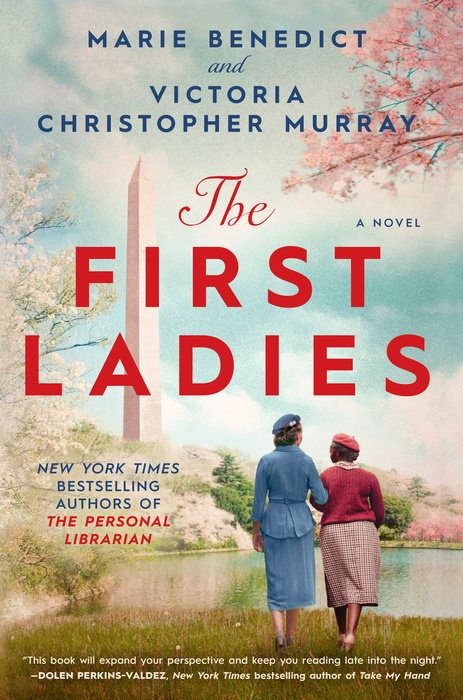 Book you've bought for the cover:
Book you've bought for the cover:
This happened to me just recently. I saw a book, When We Were Sisters by Fatimah Asghar, and I immediately reached for it. I think it was a combination of the cover and the title (I have only sisters), but it was the way the cover flowed. The images of the sisters were moving, and I couldn't tell if they were coming together or moving apart. The cover filled me with questions, and made me want to read the book to get all of my answers.
Book you hid from your parents:
This is a funny story, because I thought I was hiding this from my parents. My dad was reading The Autobiography of Malcolm X. I was 10 years old and had just heard about Malcolm X, because he'd been recently assassinated. But I knew my parents would never let me read the book. So whenever my father put it down, I would sneak and read a few pages. Then, when he left for work, I'd search to find where he'd left the book and read as much as I could after school until he came home. I folded the corners of the pages, just a little, so that I'd always keep my place. I was glad I was sneaking--because this book was so good. I couldn't believe some of the things Malcolm X had done as a young man! For the first few days, it was hard to find the book, but soon my dad became careless and left the book in the living room or kitchen. Still, it was taking some time to finish, because I could only read when my parents weren't around. Then, one day my dad said to me, "Would you hurry up and finish that book so that we can discuss Malcolm X?" I was stunned! How did he know? But I finished, and that book was the start of my father and I reading books together until he passed away.
Book that changed your life:
Falling Leaves of Ivy by Yolanda Joe helped me transition from a voracious reader to a reader who also was a writer. In the mid-'90s, I saw Ms. Joe on a television interview, and it was the first time I'd ever seen a Black author on television discussing a novel. I ran out the next day, bought that book, and read it in just a couple of days. It was a wonderful mystery that I couldn't put down, but it was also the impetus (along with serious encouragement from my husband) that pushed me to finally putting pen to paper and writing my first novel.
Favorite line from a book:
"There's no sweeter stench than the scent of a burning baby." Okay, let me explain. That's not my favorite line as a reader, but it is my favorite line as a writer, because this was proof that the first line of a book could pull a reader in and never let her go. That's what happened to me when I began Child of God by Lolita Files. I read that sentence twice and then kept reading, taking few breaks. That was in 2001, and I have never forgotten that line.
Five books you'll never part with:
I've thought and thought and thought about this question. And I have hundreds of books that I will never part with. If I buy it, I almost cry when I have to donate it because I've run out of space. If it's a book, I'm keeping it. It's a book! Who parts with books? You can have my shoes instead.
Book you most want to read again for the first time:
Leaving Atlanta by Tayari Jones. Ms. Jones was a young child during the time of the Atlanta murders. Then, as an adult, she told this story from her childhood memories and from three points of view. The author chose to write the story in first person and third person--and second person, which I found fascinating. I'd love to discover everything about that story again.
Book Candy
Book Candy
"Behold A Grammar of Japanese Ornament and Design, the 19th century book that introduced western audiences to Japanese art (1880)," courtesy of Open Culture.
---
Mental Floss shared "10 brilliant facts about Braille."
---
Gastro Obscura offered "a peek inside America's most dazzling menu collection."
---
Michael Chabon spent his Covid quarantine creating a digital tribute to the Science Fiction and Fantasy section in the bookstore of his youth, via Boing Boing noted.
My Name Is Iris
by Brando Skyhorse
My Name Is Iris by Brando Skyhorse (The Madonnas of Echo Park; Take This Man) is a chilling near-reality dystopian novel, set in an unnamed state that resembles California (and is called the "Golden State"). Protagonist Iris Prince is a second-generation Mexican American whose parents view her birthright as a gift and use the refrain "you were born here" to shame her whenever they feel her bad behavior shows a lack of gratitude. ("I am a second-generation Mexican-American daughter of Mexican immigrants, meaning that of course I was ungrateful.") Born Inés Soto, she was glad to have her first name simplified by white schoolteachers, and then to take her husband's last name. Iris is proud to be a rule follower, her highest ambition to blend in.
When the novel opens, Iris Prince has just left Alex, her husband of 16 years, and is determined to finally build the sanitized, magazine-cover life she's dreamed of: a new house in a suburban neighborhood on a cul-de-sac, a new school for her nine-year-old daughter, Melanie. She has shunned her parents' low-income home in a Spanish-speaking neighborhood (where her younger sister still lives, annoying Iris with her activism) and avoids Alex's overtures at co-parenting or getting back together. Iris feels that her real life--coffee clubs, gardening, and white picket fences--is about to begin.
Then one morning, she looks out of her lovely new bay window to find that a wall has sprung up in her front yard. It seems permanently fixed, and no one but Iris and Melanie can see it. Her realtor and contractors claim the wall must have been there all along, until gaslit Iris wonders, "Who was I to say otherwise?" And, impossible as it is, the wall seems to be growing.
Meanwhile, a new piece of wrist-wearable tech called "the band" is sweeping across the state. Iris herself voted in favor of the proposition that established this technology as a paper-saving, easy identification to "facilitate paying for and receiving state and public services, act as a drivers' license,... help users regulate a household's water usage and garbage output, serve as proof of residency for your child's enrollment in school, and potentially save the state millions of dollars." But it turns out that, regardless of citizenship, one must have a parent born in the United States to qualify for a band. Iris's confidence in her place in society is shaken. "Wear your bands and prove you belong here," says the propaganda. Hatred, bigotry and intolerance quickly swell into violence. "Somehow, in an overnight or two, my social contract had been renegotiated. Politeness vanished." Iris's loyalties are challenged: she has long associated herself with law and order and the establishment, but those forces have turned against her, despite all her rule-following. Each morning she drops her daughter off at school, the band's seductive glow encircling Mel's slim wrist--due to Alex's birthright, Mel qualifies for the privileges of the band. But Iris fears for her home and her job; her mother has been fired for her bandless status, and the family is in jeopardy. Under these pressures, Iris will have to consider just what she'll risk to protect her hard-won sense of identity.
Skyhorse seeds his text with plenty of Spanish-language dialogue, especially with Iris's parents and sister; non-Spanish-speaking readers will easily use context clues. In addition to this lovely linguistic texture, Skyhorse imbues his all-too-lifelike novel with fine details--Iris's anti-nostalgia for a defunct supermarket, her love for bland ritual--and judicious use of highly impactful notes of the mysterious or the surreal. These twists of magical realism include a ghost from a childhood trauma who haunts Iris in her vulnerable moments, and of course the wall itself, which grows and morphs overnight. The wall is ever-present, at one point "almost like a co-parent," even as it literally deprives her home of the sun's light and heat, as well as her sense of security: "Later, when I would dream, I dreamed of walls."
My Name Is Iris is terrifying with its proximity to reality. Iris is perhaps preoccupied with labels and appearances (as the book's title forecasts), and not the most likable protagonist, initially; but her flaw is simply in seeking the American dream as it's been advertised. Despite her obedience--teaching her child to always trust the police, adhering strictly to HOA rules--the world she's trusted has turned on her. What can one woman do to fight a state security regime or a magically self-constructing wall?
This gripping dystopia poses difficult but important questions about the world as we know it and the few small steps it takes to slide into horror. Intolerance and xenophobia lurk in the most seemingly benign corners. My Name Is Iris is part social commentary and part thoughtful consideration of themes that include family, identity, transitions, perspectives, and hope. In addition to being an engrossing, discomfiting tale, this will make an excellent book club selection and fuel for tough conversations. --Julia Kastner
Life Under a Perpetual Dark Cloud of Fear
An Interview With Brando Skyhorse
_Eric_van_den_Brulle.jpg) |
|
| (photo: Eric van den Brulle) | |
Brando Skyhorse was born and raised in Echo Park, Calif., and has degrees from Stanford University and from the MFA Writing Program at UC Irvine. He is an associate professor of English at Indiana University in Bloomington. His debut novel, The Madonnas of Echo Park, received the 2011 PEN/Hemingway Award and the Sue Kaufman Prize for First Fiction from the American Academy of Arts and Letters. Take This Man: A Memoir was named a Best Nonfiction Book of the Year by Kirkus. Skyhorse also co-edited the anthology We Wear the Mask: 15 True Stories of Passing in America. His dystopian novel My Name Is Iris was published by Avid Reader Press on August 1, 2023.
Does a novel like this begin with story or character?
I tell my students: it always begins with character. But not this one. It actually started with an image. I think you can guess: it started with this wall, just kind of growing out of the ground. I was finishing up my last project, an anthology of original essays on ethnic and racial passing, and it was summer of 2016, and let's just say there was a certain word that was getting bounced around, this relentless drumbeat. I started thinking about it. I remember talking to my agent, and she said that's interesting, but seems kind of topical. When Clinton is elected president, who's going to be there to buy it? And I said, I'm going to keep thinking about it.
The more I thought about it, the more I had questions. That word, wall--the most banal thing imaginable, became coded. It was a very specific kind of reference, and a relentless barrage. Where is this wall? Who is attached to it? What's the situation? I said, I'll finish this in a year. Because I didn't start with character, but with an image, it took me another five years to figure out the specifics of character and situation. Iris is trying to take care of herself, to take care of her child. She has a community that she's estranged from, and she's doing the best she can. Once that part of the story got laid out--it's about safety for her. Her American dream is safety. That's it for her. And that's something a lot of readers can relate to, I hope.
What is it that makes Iris a compelling protagonist?
Based upon the experiences Iris has had, she decided early on, I want to be safe above all. I want to protect myself and my family--that's the trade-off that I'm making, and if that makes me brusque or unlikable, I'm rolling with it. But what does that leave for Iris in the life that she's attempting to live? Has it been fulfilling; has it been satisfying? What kind of reckoning is afoot for her?
Once you get the totality of her situation, she becomes very easy to understand. I realize it's a bit of an authorial risk to put this character out there and have her say the things that she says, and put up her own wall. She has lived a very structured and specific life. My family, my daughter, my household. Very intentional. The idea of what it means to be a woman of color at this time, in this place, at this part of American history, what's that experience like? At least as I see it, there's probably a sense of guardedness, apprehensiveness. I'm not sure what the next day is going to bring me so I have to be on guard. What's out there waiting for me?
I didn't want to turn it into a Twilight Zone episode where this is a character who is being punished because she's bad. What's her backstory? Where's she from, what kind of life is she trying to live? I had to move that character development forward while at the same time pressing her from all sides. Every chapter, another bad thing happens. How to create a character who isn't solely reactive? If it's not the wall, it's the bands; if it's not the bands, it's what's going on with her family or with her daughter. She needs to take some control, some agency, but each time she does, there's something else another step ahead of her. Thinking about the lived experience that all of us have had over the last few years, I think this book is what it was like for me.
And the technology. Oh look, it's this cool little thing from Silicon Valley, and it'll track how much garbage you throw away. And very suddenly it becomes this whole other thing altogether. We have a collective embracing of certain technologies, if we feel there's going to be a benefit, and sometimes there's a flipside, unintended or intended consequences. Iris has traded away an essential part of her identity for the convenience of being American. Her community has traded away the idea of citizenship because there's a little thing that can tell them how many steps they take in a day. What does that mean for us? I don't know. But I don't know if it means anything good.
Are there heroes or villains in this story?
I don't think so. If there's a villain here, it's just fear. It's very simple. Fear leads to paranoia leads to a series of decisions... everybody in this universe in this novel is living under a perpetual dark cloud of fear.
Do you feel your readers need knowledge of Spanish to follow this novel?
My goal is not to confuse or alienate anybody. When you write a book, you're trying to connect with as many readers as possible. What I ask myself is, what's most important for this character in this situation? English, Spanish, switching back and forth? When she's with her mom, at the house, having dinner... it flows freely, and I wanted to capture that. I wanted it to be correct for that experience.
So much of the conversational nature of this book was influenced heavily by my family. My biological father left me when I was three, and I found him in my 30s. I was accepted into this family I didn't know, and all of a sudden, I had three sisters. When I hang out with them the conversation varies based on who I'm talking to, the context, what's being discussed. My Spanish is not great, but I can get what's being said if they speak really slowly, like to a child. Part of this is trying to mimic that experience for me. That sense of what would it be like to have a relationship with this language, which is important for communicating with your family, your community--lose it, and then work your way back. I hope that's one of the themes in the book. Our main character goes through this journey--if I've done it correctly--with the Spanish language. If I'm going to take the readers on that journey it has to be correct. --Julia Kastner
Rediscover
Rediscover: James Hayman
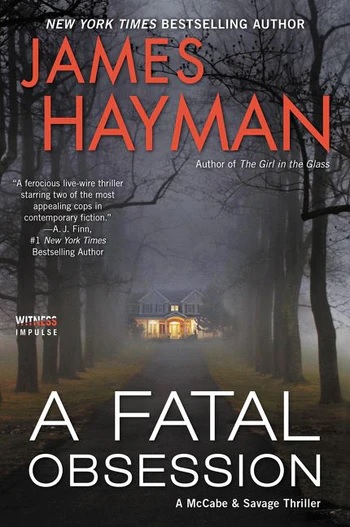 James Hayman, who wrote the McCabe & Savage police procedural mysteries that sold more than a half a million copies and were published worldwide, died June 15. The six McCabe & Savage books featured Portland, Maine, police detectives Mike McCabe and Maggie Savage. The first in the series, The Cutting, appeared in 2009. The next five were The Chill of Night, Darkness First, The Girl in the Glass, The Girl on the Bridge, and A Fatal Obsession, which appeared in 2018.
James Hayman, who wrote the McCabe & Savage police procedural mysteries that sold more than a half a million copies and were published worldwide, died June 15. The six McCabe & Savage books featured Portland, Maine, police detectives Mike McCabe and Maggie Savage. The first in the series, The Cutting, appeared in 2009. The next five were The Chill of Night, Darkness First, The Girl in the Glass, The Girl on the Bridge, and A Fatal Obsession, which appeared in 2018.
Hayman had a long career in the advertising business, including more than 18 years at Young & Rubicam, where as senior v-p/group creative director, he led creative development of TV and print advertising for clients like the U.S. Postal Service, Procter & Gamble, Lincoln/Mercury, J&J, and the U.S. Army. In 2001, he moved to Portland and a few years later, he decided, as he put it, "that if I didn't start writing the suspense thriller I'd been itching to write for years, I probably never would." The McCabe & Savage series is available from William Morrow.
| Advertisement Meet belle bear! |


